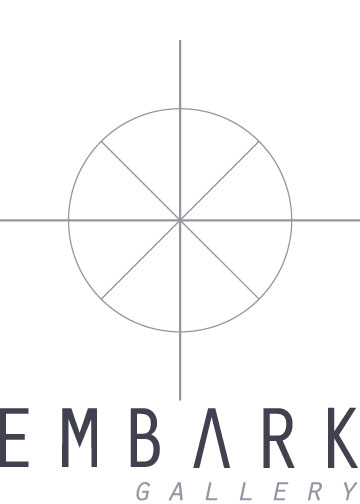Eight Local Artists Redefine the Practice of Drawing
For Immediate Release: March 14, 2019
Opening Reception: Friday, April 12, 2019 | 6-9PM
Ricki Dwyer. Ghost Print: 203, 2018. Monoprints on archival cotton rag print paper.
“Out of Line” features drawings made with anything but pen or pencil: light, fabric, seeds, architectural drafting software and even heavy metal particles from air pollution. The result is an exploration of boundaries in our lives that would otherwise go unseen. Like ghostly memories of the actions of the artist, the artworks in this show capture the immediacy and intimacy we recognize in traditional drawing. Through their use of innovative materials and techniques, they add layers of complexity to the act of mark making, while still doing the essential work of drawing- to detect and highlight the shape of the world in new and interesting ways.
Calum Craik (SFSU) presents a recorded performance piece wherein the artist draws a large rectangular shape by sewing Hawthorn seeds on a plot of contaminated land due to be developed at Pier 70. Crataegus laevigata: English Hawthorn were used historically to enclose large sections of land in the UK, which displaced the large peasantry which lived there communally. This work alludes to the historical parallels of the British enclosures to land use in contemporary San Francisco.
Ricki Dwyer (UC Berkeley) is a textile artist and weaver whose monoprint studies capture a momentary gesture of cloth. In reference to a history of drawing as documentation and towards a practice considering the vernacular of drapery, it's within the expediency of the printing process that the cloth is used to draw and document its own form.
Sarah Frieberg (UC Davis) uses the line as a tool to uncover unseeable moments of stillness in nature. The instability of the raw materials of tea, mud, egg and honey frees the artist’s control of the line and, when combined with the repetition and simplicity of the work, creates a dynamic tension between the unfettered natural world and our efforts to constrain it.
Ava Morton (CCA) draws in space with found electrical cord, wire, rope, hardware, and plaster to create sculptural forms. The work stems from the legacy of feminist handwork created through repetitive looping, knotting, and sewing. Using found urban materials belies the delicate nature of the craft, and the artist uses their own body as a framework for the skeletal structures, further connecting their practice to the corporeal traditions of feminist art.
Sally Scopa. All the Oceans, 2018. Pigment scraped from oceans of two world maps on canvas.
Claire Rabkin (Mills) frames cloth to delineate translucent doorways all across the gallery space. These ethereal portals, which have previously acted as the set for performance work by the artist, suggest a transitory state. They act as poetic drawings of the familiar past, as well as emblems of a possible future.
Lindsay Rothwell (Mills) has extrapolated a Vanitas painting into an architectural flythrough video, working in a hybrid space they call 2.5D. Utilizing speculative tools, such as architectural drafting software, the artist draft moments from the past provides the viewer access into otherwise inaccessible spaces: personal memories, lost buildings, or in this case, art historical still life paintings.
Sally Scopa (Stanford) scrapes pigment from maps, meticulously separating out each color as it is mined from the document with an X-acto knife. The artist approaches this process as a type of reverse-drawing or reverse-cartography, scratching away the rigid lines and freeing up the colors so that they hang in suspension, suggesting, yet not explicitly defining, other possibilities for representing the globe.
Emily Van Engel (SJSU) collects deposits of air pollution (small granules of heavy metals) and adheres them to a blind contour drawing made by an eraser. The process mimics the way in which society is blindly feeling through the new social, environmental and political realities that are the consequences of climate change, and speaks to the destructive nature of pollution and extraction of resources.
This exhibition was juried by Tania Houtzager, Executive Director of Embark Arts.
Participating Artists: Calum Craik (SFSU), Ricki Dwyer (UC Berkeley) Sarah Frieberg (UC Davis), Ava Morton (CCA), Claire Rabkin (Mills), Lindsay Rothwell (Mills), Sally Scopa (Stanford), Emily Van Engel (SJSU).
Press Previews by appointment.
Opening Reception: Friday, April 12, 2019 | 6-9PM
Hours: 1–6pm every Thursday-Saturday from April 13 - May 18, 2019.
Media Contact:
Angelica Jardini | Curatorial Director
info@embarkgallery.com


